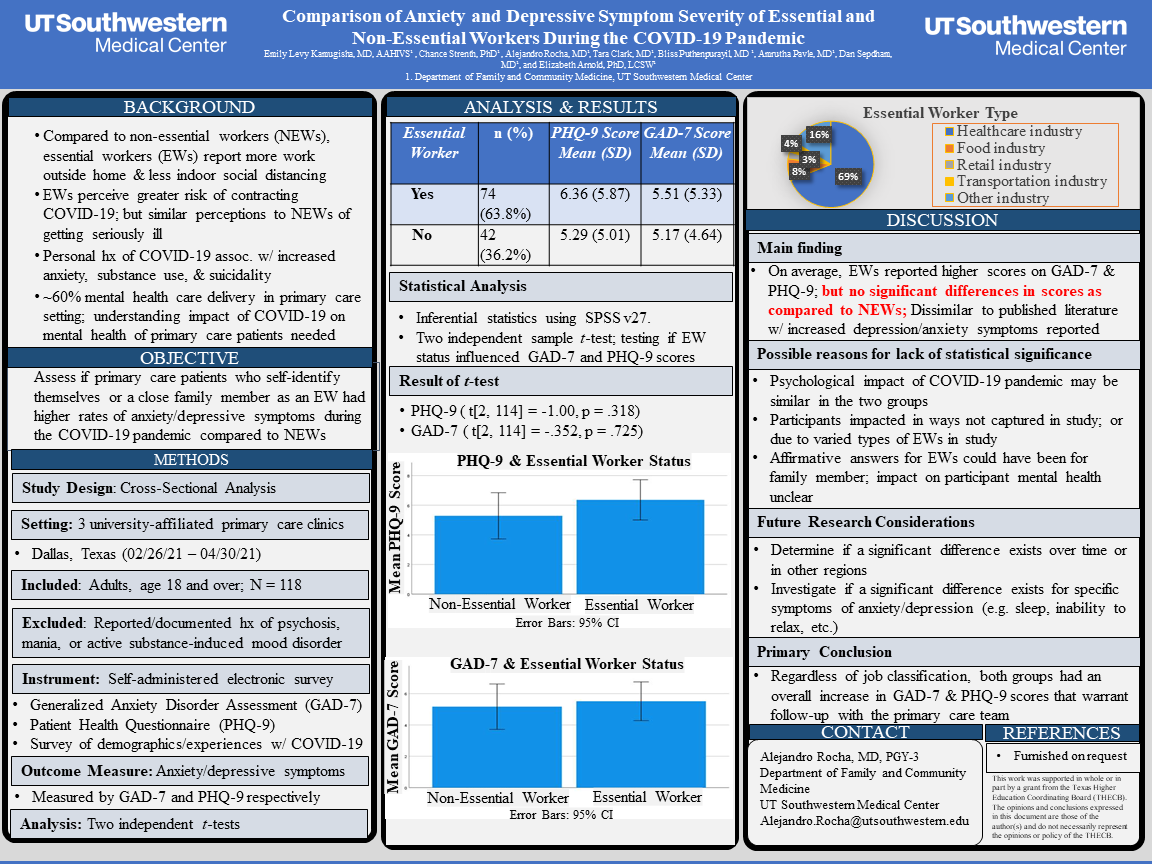PCR020: Comparison of Anxiety and Depressive Symptom Severity of Essential and Non-Essential Workers During the COVID-19 Pandemic
Emily Levy Kamugisha, MD, AAHIVS; Alejandro Rocha, MD; Chance Strenth, PhD; Elizabeth Arnold, PhD, LCSW; Bliss Puthenpurayil; Amrutha Pavle, MD

Jack Westfall
jwestfall@aafp.org 11/19/2021i think i was a non-essential worker. wonder about how we classify folks. thanks for your research and the great poster. nice work reminding us that everyone was impacted by the pandemic. thanks.